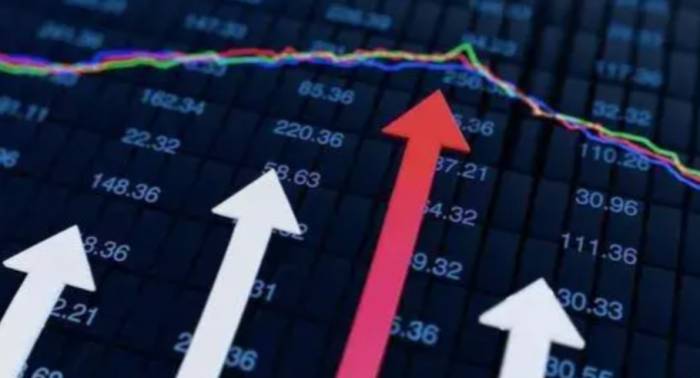Dow Soars Weekly; Nvidia Loses $200B
On June 21, Friday, the American stock market presented a mixed picture, with the Dow Jones Industrial Average managing to consolidate its recent gains while the technology sector faced continued pressure, particularly from Nvidia, which dragged down both the S&P 500 and Nasdaq indices. This intriguing day coincided with what is known as "Triple Witching Day," wherein multiple financial instruments — stock options, index options, and stock index futures — expire simultaneously, a fact contributing to heightened volatility in the market.
As trading concluded, the Dow Jones Industrial Average posted a slight increase of 15.57 points, equivalent to a nominal rise of 0.04%, bringing its total to 39,150.33 points. In contrast, the Nasdaq Composite Index experienced a decline of 32.23 points, or 0.18%, closing at 17,689.36 points. The S&P 500 index also followed a downward trajectory, falling by 8.55 points or 0.16%, finishing at 5,464.62 points.
This marked the second consecutive day of losses for Nvidia, which saw its stock plummet by 3.5%. The ripple effects were evident, with the S&P Information Technology Sector retreating by 0.84%, making it the biggest loser among the eleven major sectors.
In a broader weekly perspective, the Dow gained a robust 1.47%, representing its largest weekly increase since May. Meanwhile, the Nasdaq essentially remained stable, and the S&P 500 climbed by 0.66%, marking its third straight week of positive performance. However, concerns began to swell regarding whether other sectors could fill the void left by tech stocks that had seen a significant downturn, particularly in light of Nvidia’s staggering $200 billion market capitalization loss over just two days.
Andrew Thrasher, an analyst at Financial Enhancement Group, aptly described the current market climate as one where “sellers are entering the scene, while bulls are dancing on the edge.” He emphasized that market trends are increasingly reliant on the performance of Nvidia and Apple, suggesting that very few factors would be needed to trigger a downturn.
Conversely, Vivek Arya, a Bank of America analyst, urged caution against casting Nvidia as a long-term downturn “victim.” He noted that the current artificial intelligence boom differs greatly from the internet bubble of the late 1990s, which was characterized by a speculative frenzy that ultimately led to a market crash.
“Unlike the ‘internet craze,’ which was largely backed by risky financing, the deployment of generative AI represents a competitive race among some of the wealthiest clients,” Arya explained in a report.
The turmoil in the market over the past couple of trading days can also be linked to the expiration of approximately $5.5 trillion in options associated with indices, stocks, and exchange-traded funds (ETFs). The timing coincides with a quarterly rebalancing of the S&P 500 and Dow Jones indices; as a result, ETFs that track these indices also undergo adjustments.

Brent Kochuba, founder of the options platform SpotGamma, pointed out that the value of call options set to expire this time is approximately eleven times that of put options, a stark contrast to the previous quarter’s ratio of close to 5:1. This divergence indicates a growing appetite for upward exposure in the market alongside dwindling demand for protective puts.
He speculated that this could lead to moderate declines in heavily traded benchmark indices and stocks, stating, “Options have generally become overbought. It’s time for a consolidation phase, implying a rise in market volatility.”
“The trading focus on Friday was heavily centered around Nvidia call options,” commented Michael Green, chief strategist at Simplify Asset Management. He highlighted that over 7 million Nvidia options contracts changed hands, a figure that is three to four times the total contract volume seen five years prior.
In terms of economic data, the U.S. Purchasing Managers' Index (PMI) soared to a 26-month high of 55.1 in June, spurred on by an employment rebound. The easing of price pressures suggests that the trend of slowing inflation may persist. However, the housing market displayed signs of cooling, with existing home sales declining for the third consecutive month in May, even as prices reached new highs — a notable development given that spring is typically a peak sales season in the U.S. real estate market.
The National Association of Realtors (NAR) released figures revealing that May’s existing home sales hit an annualized rate of 4.11 million units, a modest 0.7% drop from April. Simultaneously, a rise in existing home inventory has been observed as sellers impatient for interest rates to drop have decided it was time to list their properties.
The supply of homes on the market has increased by 18.5% year-on-year, totaling 1.28 million units; however, this remains significantly below pre-pandemic levels. The latest report by S&P Global showed the service sector's PMI climbed from 54.8 in May to 55.1, the strongest reading in over two years, exceeding expectations of a 53.7 reading.
Initial manufacturing PMI increased slightly from 51.3 in May to 51.7, reflecting a steady industrial sector. However, pricing indices also indicated a deceleration, with input price indices dropping from 57.2 to 56.6 and output price indices decreasing to a five-month low of 53.5, signaling slowing price pressures across both manufacturing and services.
Chris Williamson, the chief business economist at S&P Global Market Intelligence, remarked, “Historical comparisons indicate that the latest declines align the survey’s price indicators with the Federal Reserve’s 2% inflation target.”
According to the CME's FedWatch tool, traders currently estimate a 58% probability of the Federal Reserve cutting interest rates in September, with expectations for a total of two rate cuts by the end of the year still broadly held. The financial community remains poised for shifts that may redefine market landscapes as they navigate through economic indicators, corporate performances, and ever-shifting consumer sentiments.
Leave A Comment